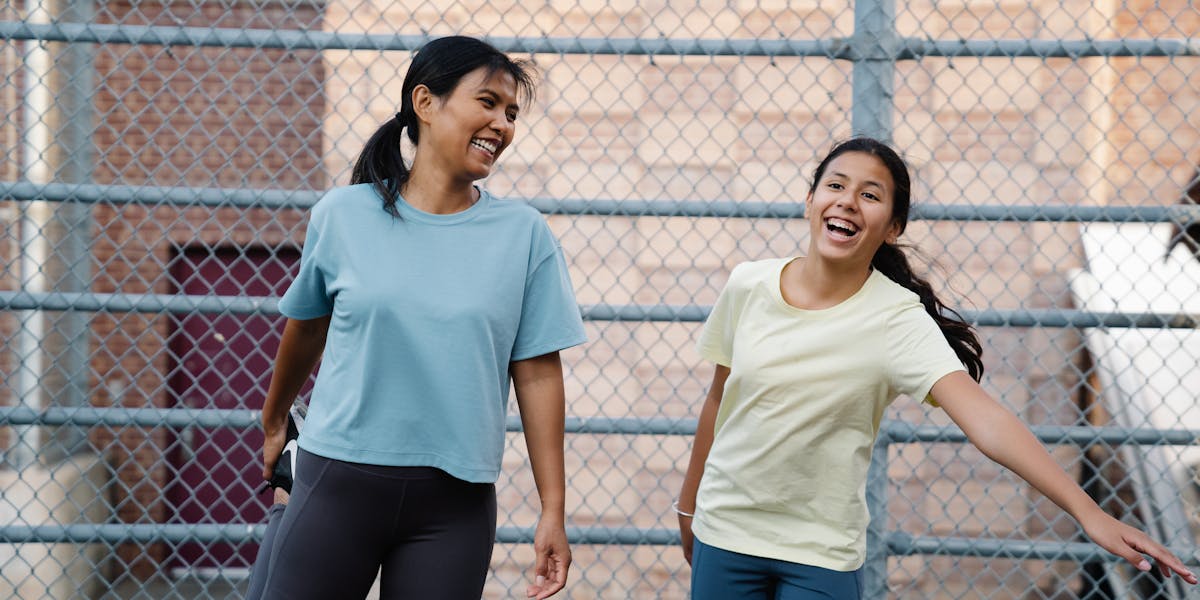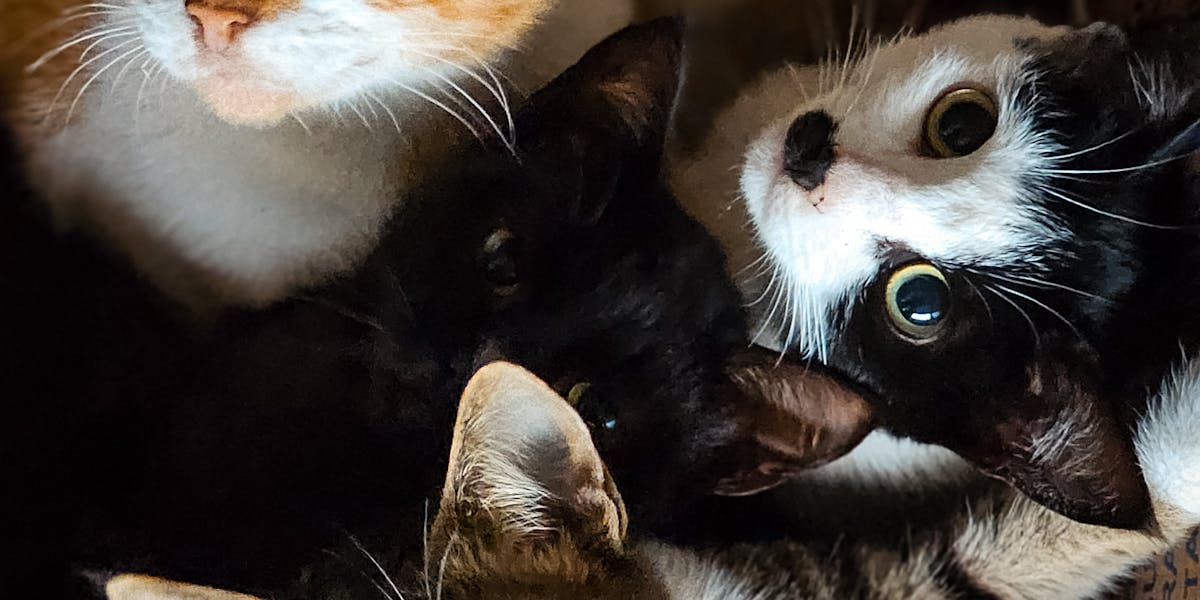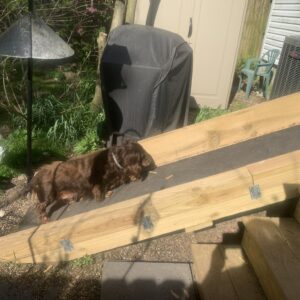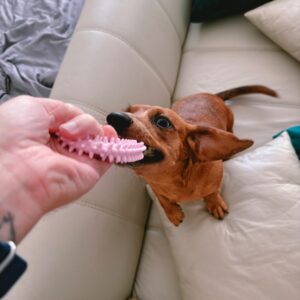How to dachshund proof home might be a new concept for many pet owners, but it’s essential for ensuring a safe environment for your furry friend. Dachshunds, known for their curious and adventurous nature, can easily find trouble if your home is not adequately prepared. Assessing potential hazards is the first step in creating a secure space, allowing you to identify areas that could pose risks. In this article, we will explore various strategies such as creating safe spaces for your dachshund, securing cables and wires, and choosing safe plants to keep your home both stylish and pet-friendly. By implementing these tips, you can ensure that your home is not only a comfortable haven for you but also a safe playground for your dachshund.

Assessing Potential Hazards in Your Home
When it comes to ensuring a safe environment for your dachshund, assessing potential hazards in your home is crucial. Here are some key areas to evaluate:
- Sharp Objects: Check for knives, scissors, and other sharp items that could cause injury.
- Cleaning Supplies: Store all cleaning products and chemicals in high cabinets or locked areas.
- Electrical Outlets: Use outlet covers to prevent accidental shocks.
- Small Items: Keep small objects, like coins and buttons, out of reach to avoid choking hazards.
- Food Hazards: Be mindful of foods that are toxic to dogs, such as chocolate and grapes.
- Furniture Stability: Ensure that furniture is sturdy and won’t tip over if your dachshund climbs on it.
- Window Screens: Check that window screens are secure to prevent falls.
- Stairs: Assess stairs for safety and consider adding a gate if necessary.
By regularly assessing these potential hazards, you can create a safer home for your dachshund and enjoy peace of mind.

Creating Safe Spaces for Your Dachshund
Creating a safe environment for your dachshund is essential to ensure their well-being and happiness. Here are some tips to help you design a secure space:
Define a Safe Area
Start by designating a specific area in your home where your dachshund can feel secure. This space should be free from hazards and provide comfort.
Use Comfortable Bedding
Provide soft bedding in their safe area. This will give your dachshund a cozy place to rest and relax.
Include Toys
Incorporate safe toys into the space. This will keep them entertained and mentally stimulated. Choose toys that are appropriate for their size and chewing habits.
Control Temperature
Make sure the area is well-ventilated and maintains a comfortable temperature. Dachshunds can be sensitive to extreme heat or cold.
Limit Access to Unsafe Areas
- Use baby gates to block off stairs and other dangerous areas.
- Ensure that windows and doors are secure to prevent escapes.
Regularly Inspect the Space
Periodically check the safe area for any potential hazards. Remove any items that could pose a risk, such as small objects or toxic substances.
Establish a Routine
Creating a routine can help your dachshund feel more secure in their space. Set specific times for play, feeding, and rest.
By following these tips, you can create a safe and welcoming environment for your dachshund, allowing them to thrive and enjoy their home.
Choosing Pet-Friendly Furniture and Decor
When selecting furniture and decor for your home, it’s essential to consider your pet’s safety and comfort. Here are some tips to help you choose pet-friendly options:
- Durable Materials: Opt for fabrics that can withstand wear and tear. Microfiber and leather are great choices as they are easy to clean and resistant to stains.
- Washable Covers: Look for furniture with removable and washable covers. This makes it easier to keep your space clean and fresh.
- Sturdy Construction: Choose furniture that is well-built and stable. This helps prevent tipping and accidents if your pet jumps on or off.
- Non-Toxic Finishes: Ensure that any paints or finishes used on furniture are pet-safe. Avoid products with harmful chemicals that could endanger your pet’s health.
- Rounded Edges: Select pieces with rounded edges to minimize the risk of injury to your pet. Sharp corners can pose a danger during playful moments.
- Color Choices: Darker colors or patterns can help hide pet hair and stains, making maintenance easier.
- Functional Decor: Incorporate decor that serves a dual purpose, like decorative baskets that can also store pet toys.
By keeping these factors in mind, you can create a stylish and safe environment for both you and your furry friend.

Securing Cables and Wires from Chewing
Protecting your dachshund from chewing on cables and wires is essential for their safety and your peace of mind. Here are some effective strategies to keep those tempting cords out of reach:
- Use Cable Protectors: Invest in cable protectors or tubing that can cover wires. This will make it harder for your dog to chew through them.
- Organize Cords: Keep cords bundled and organized. Use cord clips to attach them to walls or furniture, reducing the chances of chewing.
- Apply Bitter Tasting Spray: Spraying wires with a bitter tasting spray can deter your dog from chewing. Make sure it is safe for pets.
- Move Cords Out of Reach: Whenever possible, rearrange furniture to move cords out of your dog’s reach. Hide them behind furniture or along walls.
- Provide Chew Toys: Offer plenty of chew toys to satisfy your dog’s chewing instincts. This can help redirect their attention away from wires.
By implementing these strategies, you can effectively secure cables and wires, ensuring a safer environment for your beloved dachshund.

Using Baby Gates to Restrict Access
Baby gates are an effective tool for keeping your Dachshund safe and restricting access to certain areas in your home. Here are some key points to consider:
- Choose the Right Type: Select gates that are specifically designed for pets. Look for ones that are sturdy and tall enough to prevent your Dachshund from jumping over.
- Easy to Use: Opt for gates that are easy for you to open and close, but secure enough to keep your dog safely contained.
- Placement: Install gates in high-traffic areas or places where you want to limit access, such as staircases or rooms with hazards.
- Adjustable Features: Consider gates that can be adjusted to fit different openings, making them versatile for various spaces in your home.
- Safety First: Ensure that the gates do not have sharp edges or small parts that could pose a choking hazard.
Using baby gates not only helps to keep your Dachshund safe but also gives you peace of mind while they explore their environment. Remember to regularly check the gates for wear and tear to ensure they remain effective.

Choosing Safe Plants for Your Home
When selecting plants for your home, it’s essential to consider their safety, especially if you have pets like dachshunds. Here are some tips to help you choose safe plants:
- Research Plant Varieties: Look for non-toxic plants that are safe for pets. Some popular options include:
- Spider Plant
- Bamboo Palm
- Boston Fern
- Areca Palm
- Avoid Toxic Plants: Stay away from plants that are known to be harmful to pets. Common toxic plants include:
- Philodendron
- Lilies
- Aloe Vera
- Oleander
- Consider Plant Placement: Even safe plants can be a hazard if they are within reach of your dachshund. Place them:
- On high shelves
- In hanging baskets
- In rooms that are off-limits to pets
- Monitor Your Pets: Keep an eye on your dachshund around plants. If they show interest in chewing, redirect them to safe toys.
By choosing safe plants and being mindful of their placement, you can create a beautiful and pet-friendly home environment.

Keeping Small Objects Out of Reach
To ensure the safety of your dachshund, it’s crucial to keep small objects out of reach. These items can pose serious hazards if ingested. Here are some tips to help you manage small objects in your home:
- Identify Small Objects: Take a look around your home and identify items that could be dangerous. This includes things like:
- Coins
- Buttons
- Small toys
- Jewelry
- Paperclips
- Store Items Properly: Keep small objects in drawers or cabinets. Use storage boxes with lids to prevent access.
- Use High Shelves: Place items on high shelves that your dachshund cannot reach. This is especially important for fragile or harmful objects.
- Regular Cleaning: Regularly clean your floors and surfaces to remove any small objects that may have fallen.
- Educate Family Members: Make sure everyone in your home understands the importance of keeping small objects out of reach. Encourage them to be mindful of where they leave their belongings.
By taking these steps, you can create a safer environment for your dachshund and reduce the risk of accidents caused by small objects.

Establishing a Routine for Safe Exploration
Creating a routine for your dachshund is essential for their safety and well-being. A well-structured routine helps them feel secure while exploring their environment. Here are some key points to consider:
- Set a Regular Schedule: Establish specific times for walks, play, and exploration. This consistency helps your dachshund understand when it’s time to explore.
- Start Slow: Introduce new areas gradually. Allow your dachshund to get used to one space before moving on to another.
- Positive Reinforcement: Use treats and praise to encourage your dachshund during exploration. This builds confidence and makes the experience enjoyable.
- Monitor Behavior: Pay attention to how your dachshund reacts to new environments. If they seem anxious, take a step back and give them time to adjust.
- Incorporate Training: Use exploration time as an opportunity for training. Teach commands like “come” and “stay” to keep your dachshund safe.
- Designate Exploration Zones: Choose specific areas for exploration that are safe and free from hazards. This helps your dachshund learn where it is okay to roam.
By establishing a routine for safe exploration, you can help your dachshund enjoy their surroundings while ensuring they stay protected. Remember, a happy and safe dachshund is one that feels secure in their environment!

Supervising Your Dachshund in New Areas
When introducing your Dachshund to new environments, supervision is key to ensuring their safety and comfort. Here are some important tips to keep in mind:
- Start Slow: Allow your Dachshund to explore new areas gradually. Let them take their time to sniff and investigate.
- Watch for Signs of Stress: Look for signs that your dog may be uncomfortable, such as excessive barking, hiding, or trying to escape.
- Use a Leash: Keep your Dachshund on a leash during initial explorations to maintain control and prevent them from wandering into dangerous situations.
- Identify Hazards: Before allowing free exploration, scan the area for potential hazards like sharp objects, toxic plants, or other animals.
- Positive Reinforcement: Reward your Dachshund with treats and praise when they behave calmly in new environments. This helps build their confidence.
- Limit Access to Dangerous Areas: Use barriers or gates to restrict access to areas that may pose risks, such as stairs or water bodies.
- Stay Engaged: Keep your Dachshund engaged with toys or games to distract them from any overwhelming stimuli in the new area.
By taking these steps, you can help your Dachshund feel secure and enjoy exploring new places safely.




